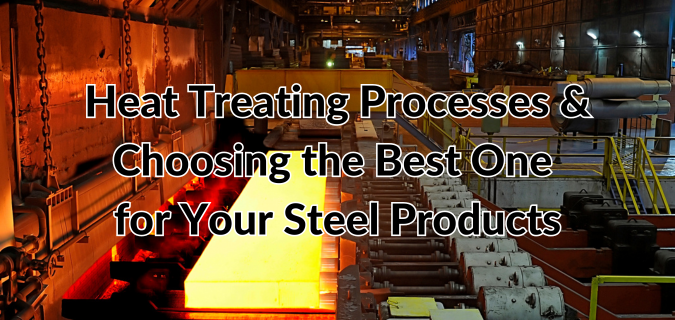
Heat treatment is a crucial process, as it helps steel achieve specific properties for its end use. By heating the metal but not letting it get to the melting stage, then putting the metal through a controlled cooling phase, manufacturers can dictate the properties of steel. Heat treating is one of the many steel solutions available from Capital Steel & Wire.
Depending on how the steel is cooled, it can be made stronger, more ductile, more malleable, tougher, or a number of other properties. However, it’s important to keep in mind that changing steel’s properties comes with trade-offs. For example, when steel is made stronger, it also becomes more brittle. If steel is softened, it loses strength. Enhancing one property will take away from another, but that speaks to the versatility of steel. It can be manufactured to the best possible specifications for each application.
The Importance of Heat Treatment of Steel
Because of these trade-offs, we understand why prioritizing the final application of steel is key while heat treating it. If steel needs strength, we know it will be more brittle than another steel that needs to be malleable, but the malleable steel won’t be as strong.
For instance, if you’re creating hand tools, farm equipment, machine parts, brackets, fence fittings, or anything else that requires good ductility, you’ll want to use a steel that was created specifically to exhibit ductility and malleability. Those properties are the most important for this use and you can sacrifice a little strength in your material. Conversely, the automotive industry uses a lot of high-strength steel for the strength-to-weight ratios and mechanical properties of strong steel. In this case, strength is far more important than ductility, so the steel is manufactured specifically to be strong.
Types of Heat Treatment Processes
While all types of heat treatment for steel involve the heating stage (getting the steel to the desired temperature), soaking stage (keeping the steel at the set temperature for the right amount of time), and cooling stage (cooling the steel to room temperature), there are five main heat treatment processes to give steel the appropriate properties:
- Stress Relieving is a type of heat treatment specifically designed to relieve stress in the steel and, unlike annealing, does not change the mechanical or chemical properties of the steel.
- Annealing softens metal to increase ductility, relieve stress, and enhance the grain structures.
- Hardening (Quenching) has the opposite effect of annealing. As the name suggests, hardening strengthens and hardens the steel.
- Tempering is used on metals that have already undergone hardening. Because hardening typically involves metals being quenched (rapidly cooled) via submersion in water, oil, or brine, sometimes the steel comes out harder than needed and more brittle than desired. Tempering relieves the internal stresses and helps reduce brittleness while retaining strength.
- Normalizing is another type of heat treatment designed to relieve internal stress. Often, normalizing is done prior to hardening as the removal of internal stress prior to hardening generally leads to greater success. Even without the additional hardening treatment, normalized steel is typically stronger than annealed steel.
Which Heat Treatment is Right for Your Steel?
The specific type of heat treatment best for your steel products depends on several factors, including the current state of the metal, any alloys you’ll be adding, and, most importantly, the final application of the heat-treated steel.
Tempered (after hardening) steel is used where strong steel is paramount, which includes construction (specifically of bridges and large buildings), agricultural, and automotive industries. Tempered steel is also ideal for the cutting edges of tools like saws and drills and knives.
Normalized steel is an ideal choice for hot-rolled bars, wheels, and other products used for construction and automotive. Axles and heavy machinery are other great uses for normalized steel. Annealed steel is also good for many automotive parts that require ductility. Chains, links, and fasteners are often made of annealed steel, as are the blades of knives and scissors.
Steel is versatile. Our experts at Capital Steel & Wire are here to help you determine precisely the type of heat-treated steel you need to complete your projects. Contact us today to discuss how we can help.





